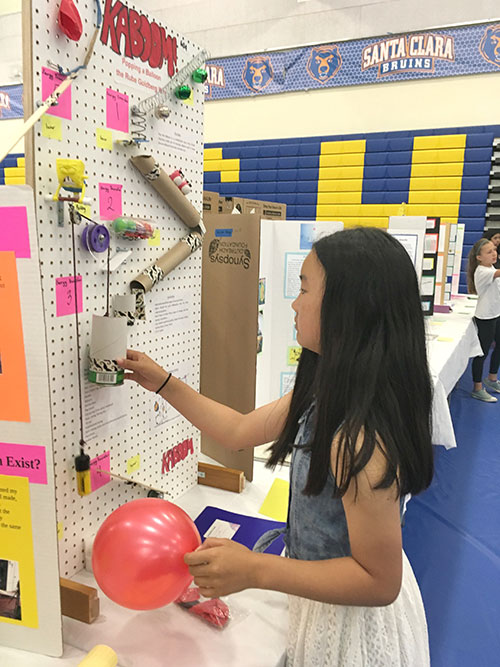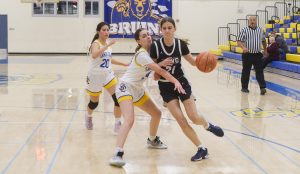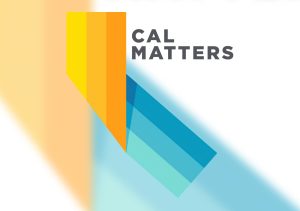From Washington Open Elementary School, fifth graders Grace Calfee, Ioan Har and Krishav Gandhi constructed Instant Growth, a bright contraption that guides a water container to water a plant on its own. Demonstrating different energy types, this science project is considered a Rube Goldberg machine (a machine with an end purpose), one of the new categories in this year’s May 10 STEAM Expo. STEAM stands for Science, Technology, Engineering, Art and Math. Nineteen schools in the Santa Clara Unified School District participated and 451 students contributed 330 science projects. In the evening, students received ribbons corresponding to the scores they received.
“This year we renamed the science fair the STEAM Expo to make it more inclusive of our new categories, which are design engineering, reverse engineering (a subcategory of design engineering) and Rube Goldberg machines,” said Jennifer Whitten, who co-chaired STEAM Expo with Jennifer Hoppe.
Some parent volunteers are part of Santa Clara Unified Parents, for which Whitten serves as president. According to Whitten, she also planned the event with the district’s science teachers on special assignment Angela Data and Heather Wygant as well as district parent Lisa Kunze, who led the judge recruitment efforts.
From Don Callejon School, Summer Kubota, 11, designed a Rube Goldberg machine that pops balloons.
“I hung a balloon at the hook up here,” Kubota said. “And then I put these balls inside the florescent light tube. The balls rolled down and caused a can to drop down on the lever, which caused a fishing line to pull down another lever and the screw on the side of the lever that went up popped the balloon.”
Buchser Middle School student Aminah Hedges, 12, created a Rube Goldberg machine that can turn the pages of stiff books.
“When you pull the string at the start of the machine, a rope goes through a pulley and it yanks a card out of a switch,” Hedges said. “A wedge is attached to a motor. When the motor starts, it yanks out the wedge and that releases a ball that rolls down and hits a series of books laid down. Then each book hits the other and that pushes books to turn a page.”
Showcasing his work in the new category of design engineering (designing a solution to a problem), Aadit Kannan, 9, from Don Callejon School unveiled a way to crack open a top secret safe made from a shoebox.
“One of these books opens the safe,” said Kannan, pointing to books lined up beside the safe. “There is foil on the safe and on the bookshelf. There is also foil on the bottom of the secret book that opens the safe. When the two foils meet, it causes the circuit to close and the safe door to open. When the circuit closes, it causes the energy to flow through and causes the mechanical arm taped to the door to swing open.”
Stephanie Torres, 11, from Pomeroy Elementary School chose physical, a traditional science fair category. Her project answered the question: Does water of the same amount weigh more after freezing or after boiling?
“If I boil a cup of water, I believe the boiled water would weigh less,” Torres said. “When you freeze water, the molecules slow down and get closer together and cause it to have more density. I learned that the increased density causes the ice to weigh more.”












0 comments